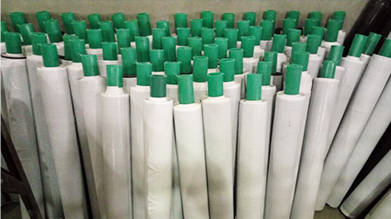Understanding Types of Intumescent Strips Essential for Fire Safety
In the realm of fire safety and building protection, intumescent strips play a vital role in safeguarding structures and enhancing safety measures. These passive fire protective devices are designed to expand when exposed to high temperatures, creating a barrier that prevents the spread of fire and smoke. This article delves into the various types of intumescent strips, their applications, and regulatory considerations.
What are Intumescent Strips?
Intumescent strips are made from materials that swell significantly when subjected to heat. This expansion forms a char that acts as an insulating barrier against fire and smoke. Often used in door frames, window frames, and other openings within a building envelope, these strips can effectively seal gaps and reduce the movement of flames and toxic smoke. Their use is crucial in maintaining the integrity of fire-rated walls, doors, and compartments.
Types of Intumescent Strips
1. Flexible Intumescent Strips Flexible intumescent strips are commonly used in fire doors and linings. They are designed to compress into the door or frame when closed, sealing any gaps that could allow smoke and fire to pass. The flexibility ensures that the strips do not impede the normal operation of doors while providing excellent sealing capabilities during a fire event.
2. Rigid Intumescent Strips Rigid intumescent strips are typically harder and more structurally supportive. They are often employed around openings in walls and ceilings, where strength and stability are needed to resist fire for an extended duration. These strips can be integrated into building designs where enhanced thermal protection is necessary.
3. Self-adhesive Intumescent Strips Self-adhesive intumescent strips are convenient options for quick installation. They feature a sticky backing that adheres directly to the surface of doors or frames. This type is particularly beneficial for retrofitting existing structures that require enhancements in fire safety without extensive construction efforts.
4. Intumescent Sealants While not strips in the traditional sense, intumescent sealants serve a similar function by sealing joints and gaps in construction elements. They expand when heated, providing a similar barrier against fire and smoke. These sealants can be used in various applications, including around pipes, ducts, and other penetrations.
types of intumescent strips

Applications of Intumescent Strips
Intumescent strips are versatile fire protection tools used in various applications
- Fire Doors Fire-rated doors are often fitted with intumescent strips to maintain their fire-resistance rating. By sealing gaps when exposed to heat, these strips prevent fire and smoke infiltration, enhancing both life safety and property protection.
- Windows Intumescent strips are also used around window frames. In the event of a fire, they expand to block smoke and flames from entering or escaping through the frame, mitigating fire spread.
- Wall and Ceiling Penetrations Whenever there’s an opening in a fire-rated wall or ceiling—like those for HVAC systems, plumbing, or electrical conduits—intumescent strips can be essential in maintaining fire integrity.
Regulatory Considerations
The use of intumescent strips is often governed by building codes and regulations that specify fire safety requirements in commercial and residential buildings. Compliance with standards, such as those set by the National Fire Protection Association (NFPA) and Underwriters Laboratories (UL), is crucial for ensuring that these fire protection products perform as intended.
Conclusion
Intumescent strips are essential components in the arsenal of fire protection strategies within buildings. By understanding the different types available and their specific applications, building owners and safety professionals can make informed choices that enhance fire safety and comply with regulations. In an era where fire safety cannot be compromised, the selection and installation of appropriate intumescent strips are crucial to protecting lives and property from the devastating effects of fire. Proper education and application of these materials ensure compliance with safety standards and effective fire resistance in structures.
-
Self Amalgamating Tape: Redefining Electrical Insulation and ProtectionNewsAug.07,2025
-
Seal Strip Solutions: Revolutionizing Energy Efficiency and Comfort in Modern BuildingsNewsAug.07,2025
-
High Voltage Electrical Tape: Powering Safety and Reliability in Modern InstallationsNewsAug.07,2025
-
Flex Tape Waterproof: Transforming the Future of Instant RepairsNewsAug.07,2025
-
Elevate Electrical Safety Standards with High-Performance PVC Electrical TapeNewsAug.07,2025
-
Butyl Rubber Tape: The Ultimate Solution for Reliable Sealing and WaterproofingNewsAug.07,2025
